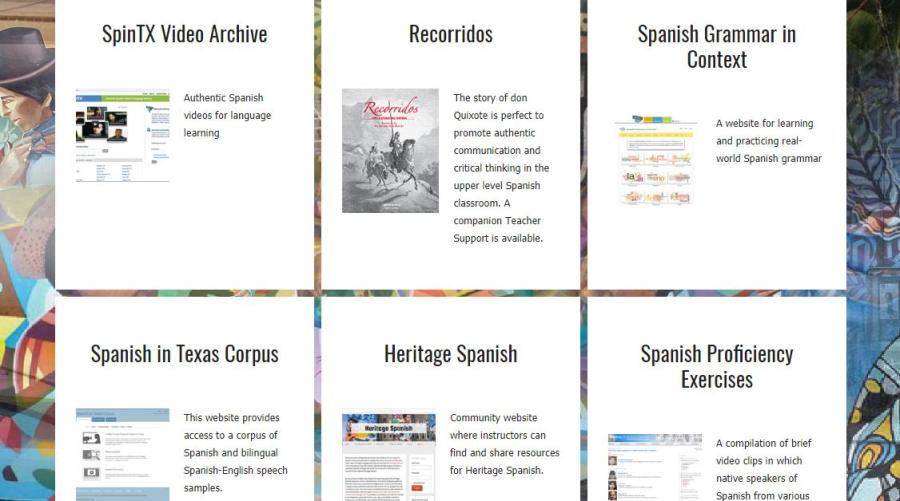It’s indoor season in Austin, Texas right now due to the insanely hot temperatures it reaches in the summertime here. There’s no better time of the year in Texas than to sit in an air conditioned room with other heritage language teachers for… a heritage language teachers’ conference. I wanted to pass along some of my main takeaways from this years’ heritage language teachers conference sponsored by the Center for Open Educational Resources for Language Learning (COERLL) at the University of Texas at Austin. The main focus this year is starting up a heritage language program.
STARTING A HERITAGE LANGUAGE PROGRAM
Teachers all across the United States are being asked to “start a heritage program” and are wondering where to start. Today’s workshop was for that issue. First of all, here is a link to the very thorough Powerpoint that professor Gabriela Zapata shared with us today, entitled “Heritage Language Program Development: Administrative and Pedagogical Aspects”. I’m also going to boil it down below, focusing on what I felt were the main ingredients, and also including my own personal takeaways and reflections that I got.
#1 – Use backwards design to build your heritage program. This is something we are accustomed to as educators, and it is no different when starting a heritage program. Identify your desired results, and even craft a mission statement for your program. With that, you can explain your goals to stakeholders and get people excited about the general direction you are giving it.
Personal takeaway: I never designed a mission statement for the heritage track I developed at my school. Going to do that!
Personal input and experience with this: Being acquainted with ACTFL proficiency levels is important for doing this, despite the notion out there that proficiency levels and assessments like OPI are ideal for non-native speakers. Not true. For next school year, I actually established a benchline proficiency level of “Intermediate-Mid” for students entering my SNS 1 classroom. I can honestly say that this year’s placement testing procedure in May allowed me to place some incoming freshmen into the general language track that, in previous years, I probably would have enrolled in my heritage classroom – and then they would have struggled.
#2 – Establish curricular priorities. What do you want your students to do with the language? Do you want them to be prepared for Spanish in a blue-collared work environment in the United States, or do you think that students should be prepared to communicate with the wider Spanish-speaking world outside of the United States? Will your goals be differentiated for different students? That will influence your curriculum.
Different perspective: La Profesora Zapata encouraged us to center our curriculum around the predominant home culture of our students, for the purpose of grounding them in their identity and building them up in it. I have to ponder on this, because I feel that I took a different approach in building the curriculum for the heritage track at our school. Although definitely including elements of what she is saying, I started from the standpoint that my students are familiar with – and prideful of – their own culture, and so my objective has been to expose them to the wider array of Spanish-speaking cultures that they aren’t familiar with. I think the decision revolves around how secure or insecure the heritage students in your community feel about their identity. That seems to vary from place to place in the United States.
#3 – Gather resources. We spent a lot of time going through some possible resources. Textbooks are out of vogue, and they deserve to be. There is a link below (screenshots included) that is a good guide for choosing resources for heritage programs.

You’ve got to visit that SpinTX Video archive. It’s amazing.

The website above, https://heritagespanish.coerll.utexas.edu/, is indispensable for finding resources for heritage classes. That “Resources” tab has a lot of stuff. And please do notice that there are heritage course syllabi posted on that link. Wow – what more could you ask for!
Like I said, go through her Powerpoint to get the whole story of everything Profesora Zapata recommends, but these were the biggest elements I took away.
Second day of the conference is tomorrow morning. If you found this worthwhile, give it a “like” here on WordPress. I may post again with more insights collected!
Thanks so much for this information!
LikeLiked by 1 person
Thank you! Please keep posting
LikeLiked by 1 person
I missed connecting with you at NIESHL this year. Thanks for all this information and resources! I have been teaching Heritage for awhile now and I am always looking for ways to invigorate my class.
LikeLiked by 1 person
Absolutely! You teach in the FAR NWest of Chicagoland, no?
LikeLike
Excelente información. ¡Gracias!
LikeLiked by 1 person